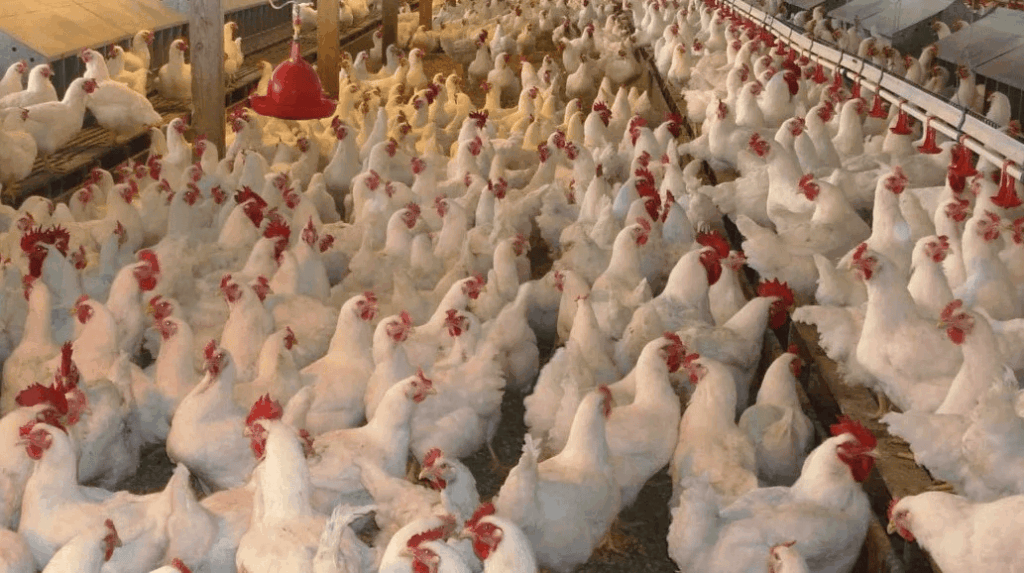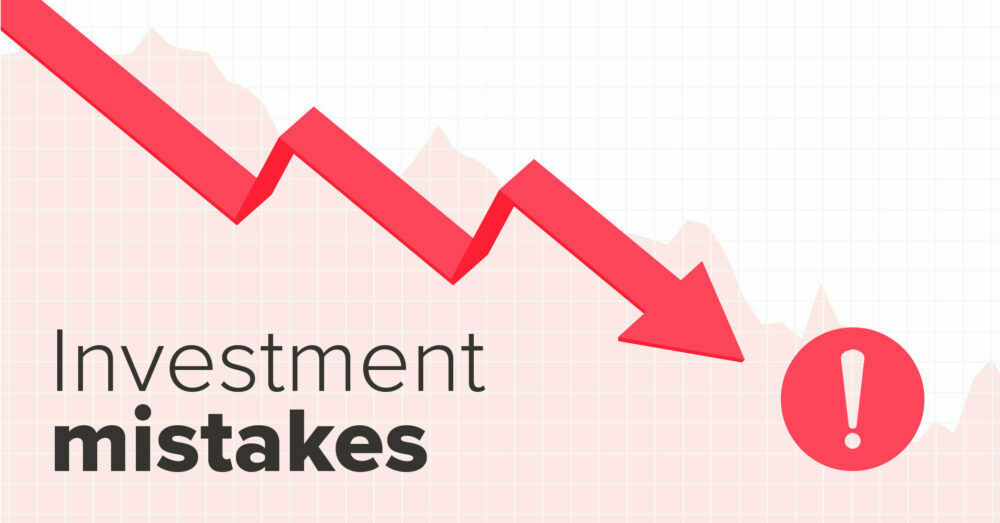Broiler farming has emerged as one of Zimbabwe’s most accessible agricultural ventures for aspiring entrepreneurs and established farmers looking to diversify their income streams. With relatively low startup costs compared to other livestock operations and a consistently strong domestic demand for chicken meat, many are asking the crucial question: is broiler farming truly profitable in Zimbabwe’s current economic climate?
This comprehensive analysis provides detailed financial projections, startup requirements, operational costs, and realistic profit expectations based on a 1,000-bird commercial operation. We will examine both the promising opportunities and the genuine challenges you will face, giving you the honest numbers needed to make an informed business decision.
Whether you are a complete beginner or an experienced farmer considering broiler production, this guide breaks down every aspect of the business model, from initial housing construction to finding reliable suppliers across Zimbabwe.
Understanding the Broiler Farming Business Model
Broiler chickens are specifically bred for meat production, reaching market weight in just 6 weeks. This rapid turnaround allows farmers to complete multiple production cycles per year, creating consistent income opportunities. Unlike layer chickens that require long-term investment before egg production begins, broilers generate returns within two months of starting each cycle.
The business model revolves around purchasing day-old chicks, providing proper housing, nutrition, and healthcare for 6 weeks, then selling mature birds to wholesalers, retailers, or directly to consumers. Success depends on efficient management of feed costs, maintaining low mortality rates, and securing reliable markets for your birds.
Infrastructure Requirements: Land and Housing
Space Requirements and Layout Planning
For a 1,000-bird operation, you need a minimum of 100 square metres of housing space, calculated at 0.1 square metres per bird. This density ensures adequate space for healthy growth while maximizing efficiency.
Your broiler house should be rectangular in shape, preferably oriented east-west to minimize direct sunlight exposure during the hottest parts of the day. The structure needs to be 2.5-3 metres high at the peak to ensure proper air circulation and prevent heat buildup.
Construction Costs and Materials
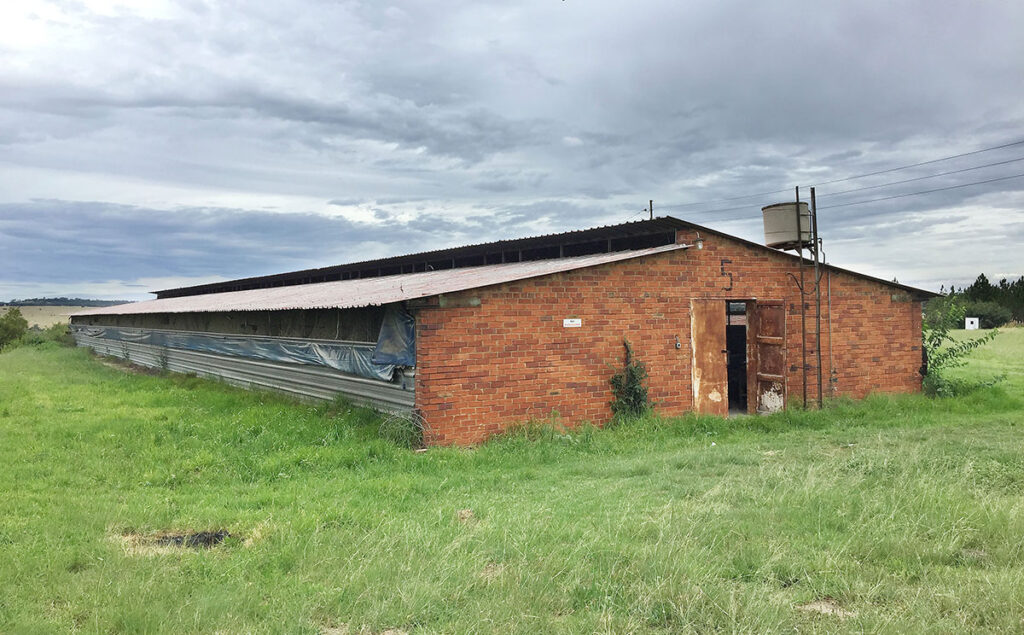
Housing construction represents your largest upfront investment, ranging from US$3,500 to US$7,000 for 1000 birds, depending on materials and finishing quality. Budget-conscious farmers can build functional structures using locally available materials, while those seeking durability and ease of maintenance might invest in higher-quality construction.
Essential Design Features
Your broiler house must include proper ventilation systems to prevent respiratory problems and heat stress. Install windows or vents positioned to allow cross-ventilation while preventing harmful drafts. Young chicks are particularly sensitive to cold drafts, which can increase mortality rates significantly.
Drainage is equally critical, as wet litter creates perfect conditions for disease outbreaks. The floor should slope gently toward drainage points, and the surrounding area must be graded to direct water away from the structure.
Predator protection requires secure fencing, properly fitted doors, and windows covered with appropriate mesh. Losses to predators can devastate profitability, making initial investment in security worthwhile.
Equipment Investment Breakdown
Your equipment investment for 1,000 birds totals approximately US$900, representing essential items that will serve multiple production cycles. Quality equipment reduces labor requirements and improves production efficiency.
Feeding Equipment Systems
Tubular feeders and feed trays ensure efficient feed distribution while minimizing wastage. Multiple feeding points prevent overcrowding during meal times and ensure all birds have equal access to nutrition.
Feeder height should be adjustable as birds grow, maintaining the correct level to prevent spillage while ensuring easy access. Poorly positioned feeders can increase feed costs by 10-15% through wastage.
Water Distribution Systems
You will need a combination of 12-litre and 4-litre fonts (waterers) strategically placed throughout the house. Clean, constant water access directly impacts growth rates and feed conversion efficiency.
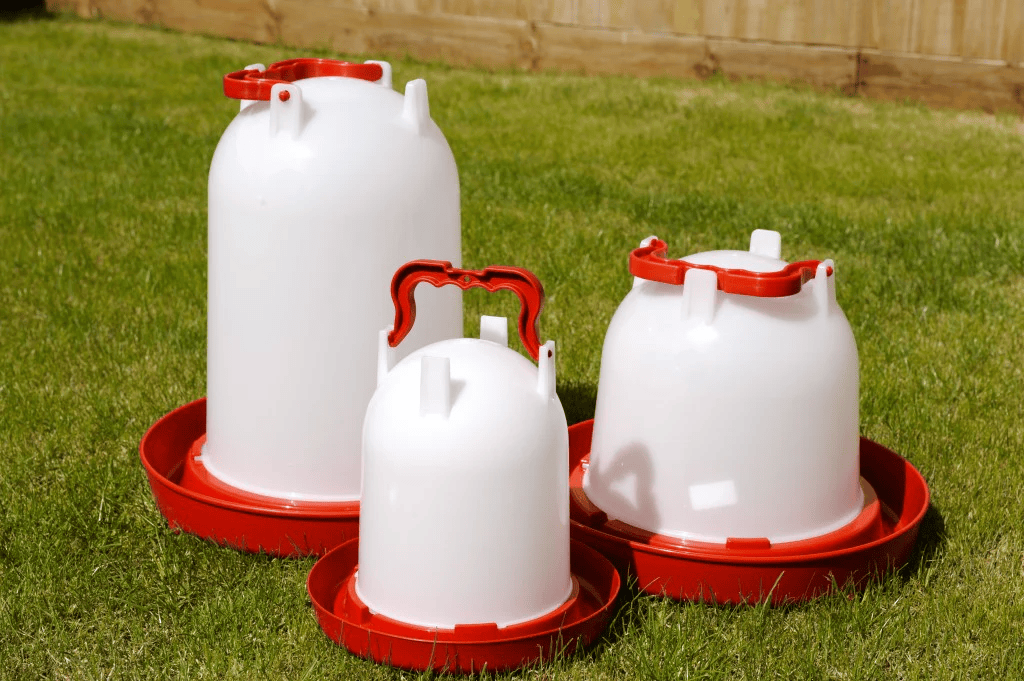
Water systems should be elevated slightly above ground level to prevent contamination from litter, but low enough for easy bird access. Regular cleaning and disinfection of water systems prevents disease transmission and maintains bird health.
Lighting Infrastructure
Proper lighting systems encourage feeding activity and support optimal growth patterns, particularly during early weeks when chicks need extended feeding periods. Install sufficient artificial lighting to maintain 16-18 hours of light daily during the first three weeks, gradually reducing to natural daylight patterns.
Energy-efficient LED lighting reduces ongoing electricity costs while providing consistent illumination. Timer systems automate lighting schedules, reducing labor requirements and ensuring consistency.
Water Supply Solutions and Costs
Reliable water access is absolutely critical for broiler farming success. Water shortages can kill birds within 24-48 hours, making backup systems essential rather than optional.
Municipal Water Connection
If municipal water is available in your area, this often represents the most cost-effective initial option for startup operations. However, Zimbabwe’s municipal water supply faces frequent interruptions, making backup systems necessary even when municipal connection exists.
Monthly municipal water costs for 1,000 birds typically range from US$30-50, depending on local rates and consumption patterns. Factor in potential connection fees and monthly service charges when calculating ongoing costs.
Borehole Installation
A complete borehole system with pump, pipes, and storage tank costs US$2,000 to US$3,000. This investment provides long-term water security and independence from municipal supply interruptions. Boreholes typically pay for themselves within a few years through reduced monthly water costs and improved production reliability.
Borehole depth requirements vary by location, typically ranging from 40-70 metres in most farming areas. Include water testing costs to ensure quality meets poultry requirements before finalizing borehole installation.
Well System Alternative
For areas with accessible water tables, well systems offer a more affordable option at around US$1,000 for complete setup including pump, pipes, and storage tank. Wells require less initial investment but may have limited yield compared to properly constructed boreholes.
Consider seasonal water table fluctuations when planning well systems, ensuring adequate depth to maintain supply during dry seasons.
Comprehensive Feed Requirements and Cost Analysis
Feed represents your largest ongoing operational expense, typically accounting for 65-70% of total production costs. Understanding feed requirements and managing costs effectively determines profitability more than any other single factor.
Feed Phases and Nutritional Requirements
Each broiler requires approximately 4kg of feed to reach market weight at 6 weeks. For 1,000 birds, you need 4,000kg of feed, equivalent to 80 bags of 50kg each. Feed is distributed across three distinct phases, each formulated for specific growth requirements.
Starter Feed (0-3 weeks): High-protein formulation (22-24% protein) supports rapid early growth and immune system development. Birds consume approximately 1.2kg during this phase. Quality starter feed is crucial as poor early nutrition affects final weight and profitability.
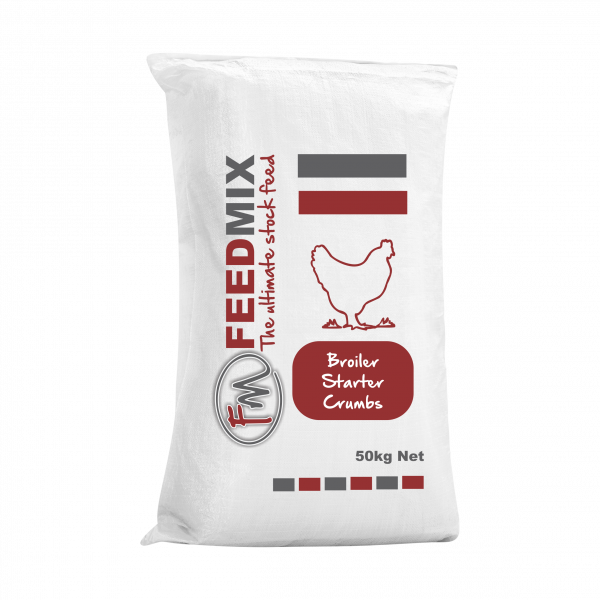
Grower Feed (3-5 weeks): Balanced nutrition (20-22% protein) maintains steady growth while building muscle mass. Birds consume approximately 1.5kg during this phase. Grower feed represents the largest volume requirement in the feeding program.
Finisher Feed (5-6 weeks): Lower protein content (18-20%) focuses on weight gain and meat quality improvement. Birds consume approximately 1.3kg during this phase. Finisher feed quality directly impacts final carcass grade and market value.
Feed Cost Calculations
At current average prices of US$33 per 50kg bag, your total feed cost is 80 × $33 = US$2,640 per cycle. This calculation assumes minimal wastage through proper feeder management and storage practices.
Feed prices fluctuate based on maize and soya bean commodity prices, seasonal availability, and transportation costs. Monitor market trends and consider bulk purchasing during lower price periods to reduce costs.
Day-Old Chick Procurement and Management
Chick Requirements and Mortality Planning
Accounting for standard 5% mortality rates, you need 1,050 day-old chicks to achieve 1,000 birds at market weight. This mortality rate assumes good management practices and normal seasonal conditions. Poor management can increase mortality to 10-15%, significantly impacting profitability.
At current prices of US$1.05 per chick, your total cost is US$1,102.50. Source chicks from reputable hatcheries with good vaccination programs and genetic backgrounds to ensure optimal growth performance.
Chick Quality Indicators
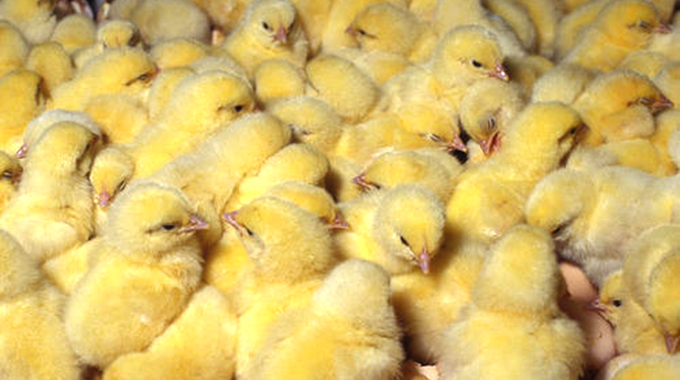
Quality day-old chicks should be active, bright-eyed, and responsive to sound. Avoid chicks that appear lethargic, have unhealed navels, or show signs of dehydration. Poor quality chicks result in higher mortality rates and reduced growth performance regardless of management quality.
Establish relationships with multiple hatcheries to ensure consistent supply availability and negotiate better pricing for regular orders. Most hatcheries offer delivery services, but transport conditions significantly impact chick survival rates.
Health Management and Supplementary Costs
Vaccination and Health Programs
Vaccines, vitamin supplements, veterinary supplies, disinfectants, and litter materials cost approximately US$100 per cycle. This investment in health management prevents disease outbreaks that can devastate entire flocks within days.
Essential vaccinations include Newcastle disease, Infectious Bursal Disease (IBD), and depending on local conditions, Fowl Pox and Infectious Bronchitis. Follow recommended vaccination schedules strictly, as timing delays reduce effectiveness.
Litter and Bedding Requirements
Wood shavings, sawdust, or other suitable bedding materials provide insulation, absorb moisture, and create comfortable flooring for birds. Budget US$30-40 per cycle for quality litter materials. Good litter management reduces disease pressure and improves air quality within the house.
Replace or add fresh litter as needed to maintain dry conditions. Wet litter creates ideal conditions for bacterial growth and respiratory problems.
Utility and Transportation Costs
Electricity Requirements
Electricity for lighting systems averages US$50 per cycle, assuming standard commercial rates and efficient LED lighting systems. This cost can vary significantly depending on local electricity tariffs and lighting duration requirements.
Consider solar power systems for lighting if electricity costs are prohibitive or supply is unreliable. Initial solar investment typically pays for itself within 18-24 months through reduced electricity bills.
Transportation and Logistics
Moving feed, chicks costs approximately US$50 per cycle. This includes delivery of feed and chicks to your farm. Own transport reduces these costs but requires vehicle investment and maintenance.
Many suppliers offer delivery services included in their pricing, particularly for regular customers. Compare total costs including delivery when evaluating supplier options.
Miscellaneous Expenses
Reserve US$57 for unexpected costs including minor equipment repairs, additional veterinary treatments, and emergency supplies. Unexpected expenses are common in livestock farming, making contingency budgets essential for smooth operations.
Complete Financial Analysis
Total Production Costs Summary
Total Production Cost: Adding the costs stated above together, we get US$4,000 per cycle for 1000 birds, averaging US$4 per bird
This comprehensive cost calculation includes all direct expenses required to raise 1,000 broilers from day-old chicks to market weight. Cost control in each category directly impacts overall profitability.
Revenue Projections and Market Pricing
Selling 1,000 broilers as live birds in bulk at US$5 per bird (curreny wholesale price) generates US$5,000 in revenue. This pricing assumes bulk sales to established buyers rather than retail sales which might achieve higher prices but require additional marketing efforts.
Market prices fluctuate based on supply and demand, seasonal factors, and economic conditions. Develop relationships with multiple buyers to ensure consistent market access and competitive pricing.
Profit Calculations
Gross Profit: US$5,000 (revenue) – US$4,000 (costs) = US$1,000 per cycle
Profit Per Bird: US$1
This 25% gross profit margin provides reasonable returns while accounting for the various risks inherent in livestock farming.
Annual Production and Profitability Analysis
Production Cycle Planning
Each complete production cycle requires 7 weeks: 6 weeks for broiler growth plus 1 week between batches for thorough cleaning, disinfection, and house preparation. This cleaning period is essential for disease prevention and maintaining biosecurity standards.
With 52 weeks annually, you can complete 7 full cycles (52 ÷ 7 = 7.4 cycles, rounded down to 7 complete cycles for conservative planning).
Annual Financial Projections
Annual Gross Profit: $1,000 × 7 = US$7,000
Staff Costs: US$2,880 (2 employees at US$120 each per month = US$240 monthly × 12 months)
Net Annual Profit: $7,000 – $2,880 = US$4,120
This net profit calculation assumes full-time labor costs for farm management and daily operations. Smaller operations might reduce labor costs through owner-operator management.
Return on Investment Analysis
With initial infrastructure investment of approximately US$7,000-10,000 (housing, equipment, and water system), the annual net profit of US$4,120 represents a 41-59% return on investment before considering equipment depreciation and infrastructure maintenance.
Risk Management and Real-World Challenges
Disease Prevention and Biosecurity
Disease outbreaks represent the greatest single threat to broiler farming profitability. Newcastle disease, coccidiosis, and respiratory infections can kill entire flocks within days if not prevented through proper management.
Implement strict biosecurity measures including visitor restrictions, footbaths, equipment disinfection, and quarantine procedures for new stock. The cost of prevention is always lower than the cost of treatment or flock replacement.
Feed Price Volatility Management
As your largest cost component, feed price increases can eliminate profitability quickly. Feed costs can fluctuate 20-30% based on maize and soya bean commodity prices, weather conditions affecting crop yields, and transportation costs.
Consider relationships with multiple feed suppliers to ensure competitive pricing and supply security. Some farmers explore on-farm feed production to reduce costs, though this requires additional investment and expertise.
Market Price Risk
Broiler prices fluctuate based on supply and demand dynamics, seasonal consumption patterns, and economic conditions. Oversupply during certain periods can depress prices below profitable levels.
Develop relationships with consistent buyers including wholesalers, retailers, and processing plants. Contract farming arrangements with established buyers can provide price stability in exchange for guaranteed supply commitments.
Operational Risk Factors
Mortality Management: While 5% mortality is standard, poor management can result in 15-20% losses. Temperature control during brooding, proper ventilation, and disease prevention are critical for maintaining low mortality rates.
Power Supply Reliability: Load shedding disrupts lighting schedules and water pump operations. Consider backup power solutions including generators or solar systems for critical operations.
Weather Extremes: Extreme temperatures stress birds and can increase mortality. Proper housing design and ventilation systems help maintain optimal environmental conditions.
Supply Chain Disruptions: Delays in feed delivery or chick availability can disrupt production schedules. Maintain relationships with multiple suppliers and consider emergency feed storage.
Scaling and Growth Opportunities
Expanding Production Capacity
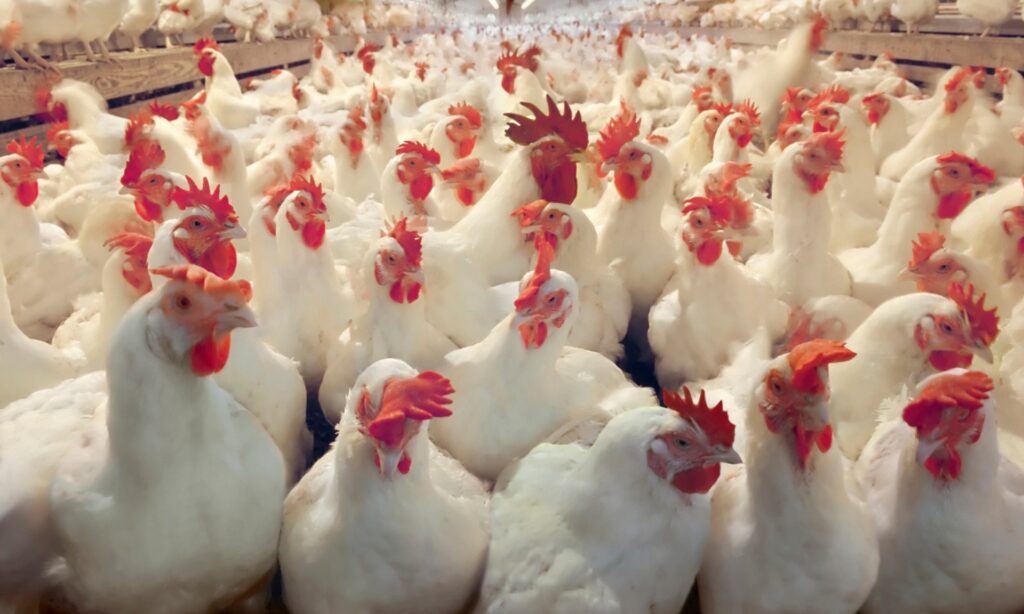
Once you have mastered 1,000-bird operations, scaling to 2,000-3,000 birds per cycle can improve economies of scale and profitability. Larger operations spread fixed costs over more birds and often negotiate better input pricing.
However, scaling requires proportional increases in infrastructure, working capital, and management complexity. Ensure mastery of smaller operations before attempting expansion.
Value Addition Opportunities
Processing birds for retail sales can increase profit margins significantly, with processed birds selling for US$7 compared to US$5 for live birds. However, processing requires additional investment in equipment, facilities, and food safety compliance.
Consider partnerships with existing processing facilities initially, before investing in on-farm processing capabilities.
Market Development
Direct sales to restaurants, supermarkets, and consumers often achieve higher prices than bulk sales to wholesalers. However, direct sales require additional marketing efforts, smaller delivery quantities, and stronger customer service capabilities.
Online marketing and home delivery services are growing rapidly in urban areas, creating new opportunities for direct-to-consumer sales.
Broiler Poultry Farming Business Plan
A successful broiler farming enterprise requires a well-structured business plan that addresses all critical components from startup through ongoing operations. Your business plan should define your target market, production capacity, financial projections, and growth strategy over a 3-5 year period. Most successful operations start with 500-1,000 birds to develop expertise before scaling to larger production levels. Include detailed cash flow projections that account for the cyclical nature of broiler production, where expenses occur upfront while revenues are realized only at the end of each 6-week cycle.
Market analysis forms a crucial component of your business plan, identifying potential buyers including wholesalers, retailers, restaurants, and direct consumers in your area. Research local demand patterns, seasonal price fluctuations, and competitive landscape to position your operation effectively. Consider both live bird sales and potential value-addition opportunities such as processing, which can increase profit margins but require additional investment and regulatory compliance. Establish relationships with potential buyers before starting production to ensure market access when your first birds reach maturity.
Your business plan must also address risk management strategies including disease prevention protocols, feed price volatility management, and backup systems for critical infrastructure. Include contingency plans for common challenges such as power outages, water supply interruptions, and market price fluctuations. Financial planning should incorporate working capital requirements for multiple production cycles, as you will need to fund new batches before receiving payment from previous cycles. Consider seasonal planning to optimize production timing with peak demand periods such as holidays and special events when broiler prices typically increase.
Supplier Directory and Contact Information
Important Disclaimer: The supplier contact details provided are for informational purposes only. ZimLedger maintains no affiliation with these suppliers and does not endorse or guarantee the quality, pricing, or reliability of their products and services. Readers must conduct proper due diligence before engaging with any supplier, including verifying credentials, pricing, and regulatory compliance.
Poultry Equipment and Veterinary Products
Veterinary Distributors
Address: Corner 4th Street and Kenneth Kaunda Avenue, Harare
Phone: 0242 793753
Farm and City Centre
Address: Corner 4th Street and Robson Manyika Avenue, Harare
Phone: 0242 251162
Wimpat Marketing Hardware & Vet
Address: Corner 2nd Street and South Avenue, Harare
Phone: 0775 346336
Shalom Agrochemicals
Address: Corner 2nd Street and South Avenue, Harare
Phone: 0772 948 725
Fivet Poultry & Livestock Centre
Address: Corner Robson Manyika and 4th Street, Harare
Phone: +263 772139125, +263 772139126
Feed Suppliers
Fivet Poultry & Livestock Centre
Address: Corner Robson Manyika and 4th Street, Harare
Phone: +263 772139125, +263 772139126
AgriFoods
Address: Kenneth Kaunda Avenue, Harare
Phone: 0242 756100, 0712 632 333, 0712 620 567
National Foods
Address: Kenneth Kaunda Avenue, Harare
Phone: +263 242 753 751
ProFeeds
Address: 82 Woolwich Road, Willowvale, Harare
Phone: 0242 661048, 0242 666960
Novatek
Address: Corner Robert Mugabe and Robson Manyika Avenue, Harare
Phone: 024 2310240, 0771 452 991
Feedmix
Address: 81 Robson Manyika Road, Harare
Phone: 077 184 4222, 0771 186 889
Capital Foods
Address: 179-181 Munhondo Road, Ruwa Industrial Sites, Ruwa
Phone: +263 772 133 272, +263 242 132 847, +263 242 132 684
Day-Old Chick Suppliers
Novatek
Address: Corner Robert Mugabe and Robson Manyika Avenue, Harare
Phone: 0242 310240, 0771 452 991
ProFeeds
Address: 82 Woolwich Road, Willowvale, Harare
Phone: 0242 661048, 0242 666960
Henchicks
Phone: 0772 421 795, 0242 764058
Irvine’s Chickens
Address: Henley Drive Extension, Waterfalls, Harare
Phone: +263 86 770 06 080
Conclusion and Next Steps
Broiler farming in Zimbabwe offers genuine profit potential for dedicated farmers willing to invest in proper infrastructure and management practices. With US$4,120 annual net profit from a 1,000-bird operation, the business provides reasonable returns while requiring moderate startup capital.
Success depends critically on disease prevention, feed cost management, and securing reliable markets. Start with smaller operations to develop expertise before scaling to larger production levels.
The supplier directory provided offers starting points for sourcing essential inputs, but always compare pricing and quality from multiple sources before making purchase decisions.
Most importantly, treat broiler farming as a serious business requiring daily attention, continuous learning, and adaptation to changing market conditions. Those who approach it professionally and systematically will find it a rewarding and profitable agricultural enterprise.
ZimLedger
ZimLedger is the all in one business and finance platform for Zimbabwe. It generates quotes, invoices, payslips and financial statements, manages business ledgers, tracks income and expenses, and builds shopping lists. ZimLedger offers a simple yet powerful solution tailored to local needs. Whether you are budgeting in ZiG or USD, managing business accounts, converting Ecocash statements, or tracking household expenses, ZimLedger empowers you to stay organised, make informed financial decisions, and grow your wealth—right from your phone or computer.

